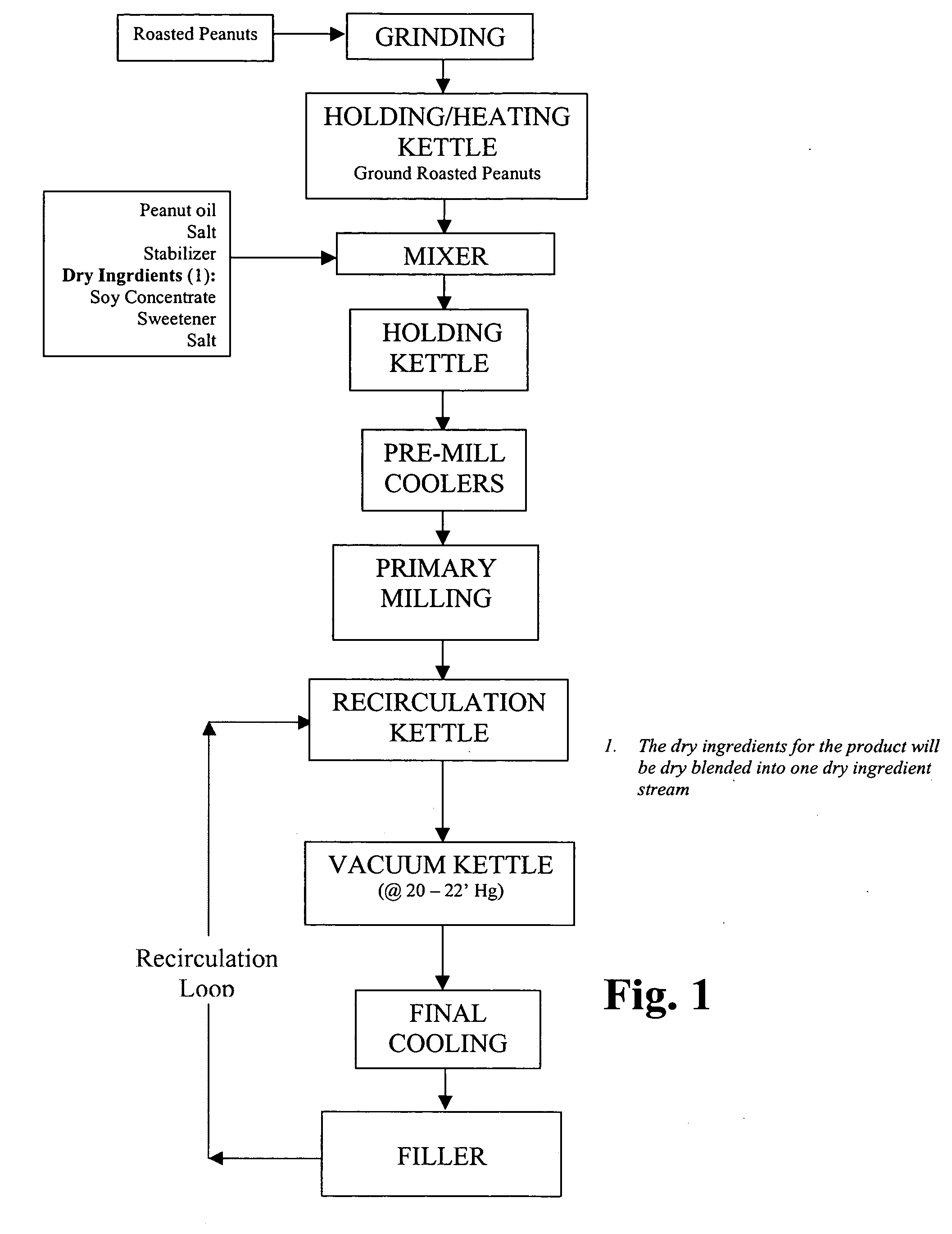Peanut spread
a technology of peanuts and spreads, applied in the field of peanut spreads, can solve the problems of little inclination of consumers to sacrifice organoleptic properties in their favorite foods, and achieve the effect of reducing carbohydrates
- Summary
- Abstract
- Description
- Claims
- Application Information
AI Technical Summary
Benefits of technology
Problems solved by technology
Method used
Image
Examples
example 1
[0055]
IngredientLevel %Peanut OilFood Materials Corp.22.98Ground Roasted Peanuts65.00StabilizerSta-Set FR, Loders Croklaan1.80SweetenerSucralose, McNeil Nutritionals0.01Microcrystalline CelluloseAvicel LM 310, FMC BioPolymer1.00Soy Prot. ConcentrateArcon F, ADM Protein Specialties8.00Salt1.21Total %100.00
[0056] The product is an acceptable, relatively soft peanut spread. In this example, peanuts with a fat content of 49.7%, protein content of 23.7%, total carbohydrate of 21.5%, and fiber of 8.0% would result in a peanut spread with a fat content of 57.3%, protein content of 20.9%, total carbohydrate of 16.6%, and fiber of 7.7%. A two-tablespoon serving, weighing approximately 31 grams, results in a adjusted carbohydrate level of 2.7 grams.
example 2
[0057]
IngredientLevel %Peanut OilFood Materials Corp.20.88Ground Roasted Peanuts64.00StabilizerSta-Set FR, Loders Croklaan1.90SweetenerSucralose, McNeil Nutritionals0.01Microcrystalline CelluloseAvicel LM 310, FMC BioPolymer0.00Soy Prot. ConcentrateArcon F, ADM Protein Specialties12.00Salt1.21Total %100.00
[0058] The product is an acceptable, firmer peanut spread. In this example, peanuts with a fat content of 49.7%, protein content of 23.7%, total carbohydrate of 21.5%, and fiber of 8.0% would result in a peanut spread with a fat content of 54.9%, protein content of 23.5%, total carbohydrate of 16.2%, and fiber of 7.4%. A two-tablespoon serving, weighing approximately 31 grams, results in a adjusted carbohydrate level of 2.7 grams.
PUM
 Login to View More
Login to View More Abstract
Description
Claims
Application Information
 Login to View More
Login to View More - R&D
- Intellectual Property
- Life Sciences
- Materials
- Tech Scout
- Unparalleled Data Quality
- Higher Quality Content
- 60% Fewer Hallucinations
Browse by: Latest US Patents, China's latest patents, Technical Efficacy Thesaurus, Application Domain, Technology Topic, Popular Technical Reports.
© 2025 PatSnap. All rights reserved.Legal|Privacy policy|Modern Slavery Act Transparency Statement|Sitemap|About US| Contact US: help@patsnap.com

